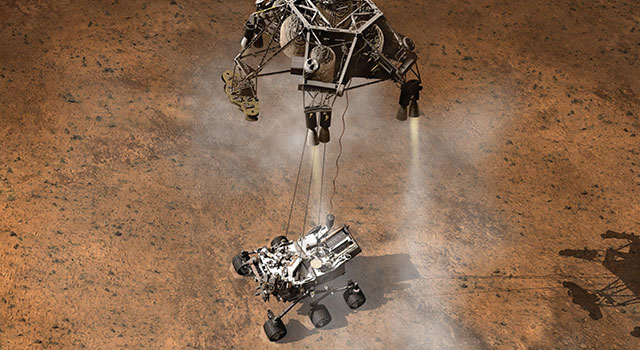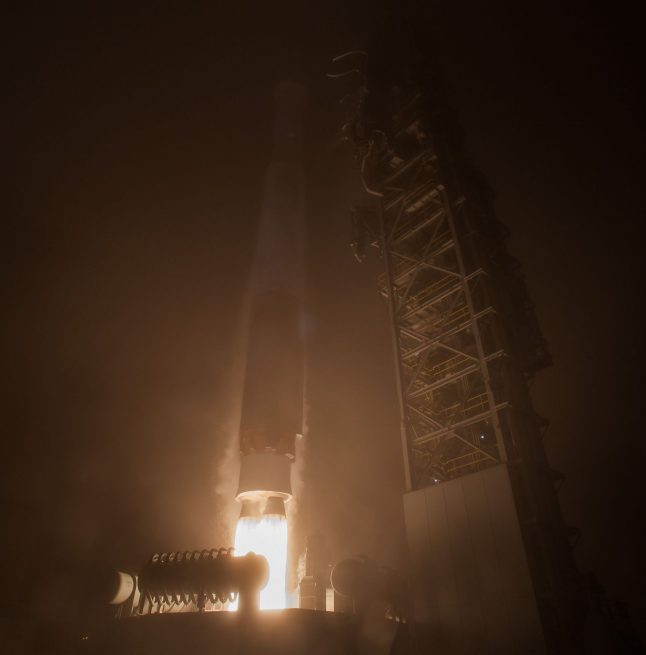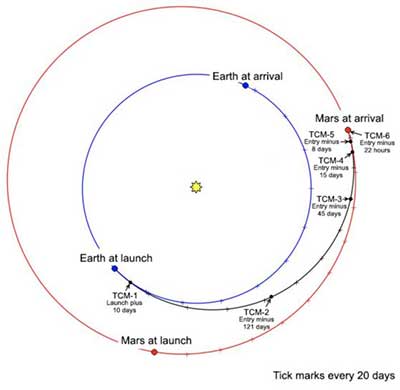
Human Space Exploration (1)
Marsbound!: NASA InSight lander launches toward Red Planet
LOMPOC, Calif. — Initially flying through early-morning fog, a United Launch Alliance (ULA) Atlas V rocket lifted off from Vandenberg Air force Base’s Space Launch Complex 3 to send NASA’s Interior Exploration using Seismic Investigations, Geodesy and Heat Transport (InSight) lander on a six-month journey to Mars.

Liftoff took place at 4:05 a.m. PDT (7:05 a.m. EDT / 11:05 GMT) May 5, 2018. In the days leading up to the launch, meteorologists with the U.S. Air Force’s 30th Space Wing predicted a 20 percent chance of favorable weather for the launch due to an expected marine layer fog which would reduce visibility. This range safety constraint was the only area of concern.
While visibility was limited on the morning of May 5, Range Safety waived the visibility requirement after confirming that all ground telemetry systems were operational during the countdown.
“The United States continues to lead the way to Mars with this next exciting mission to study the Red Planet’s core and geological processes,” said NASA Administrator Jim Bridenstine in a statement. “I want to congratulate all the teams from NASA and our international partners who made this accomplishment possible. As we continue to gain momentum in our work to send astronauts back to the Moon and on to Mars, missions like InSight are going to prove invaluable.”
This was the first interplanetary flight to launch from the West Coast of the United States. The primary reason for this was because of range availability. While it takes less fuel to achieve orbit from the East Coast, the InSight lander is light enough and the Atlas V powerful enough that it could launch successfully from either side of the continent.
InSight is a 794-pound (360-kilogram) robotic lander designed to study the interior structure of Mars. With its two solar panels deployed the lander is 19 feet 8 inches (6 meters) long. Based on the design of NASA’s 2008 Phoenix lander, the spacecraft is designed to use its eight-foot (2.4 meter) robotic arm to place a seismometer, a wind and thermal shield to protect that instrument and a self-burrowing temperature probe on the Martian surface. The probe will use these science instruments and a radio experiment called RISE to study the deep interior of Mars to learn about how all rocky planets, including the Earth, formed. The InSight mission is part of NASA’s Discovery Program.


“The Discovery Program is all about doing firsts, getting to places that we’ve never been to before, and this mission will probe the interior of another terrestrial planet giving us an idea of the size of the core, the mantle, the crust and our ability to compare that with the Earth,” said NASA Chief Scientist Jim Green during a NASA pre-launch briefing on May 3. “This is of fundamental importance for us to understand the origin of our solar system and how it became the way is today.”
Read more at NASA MarsBound









